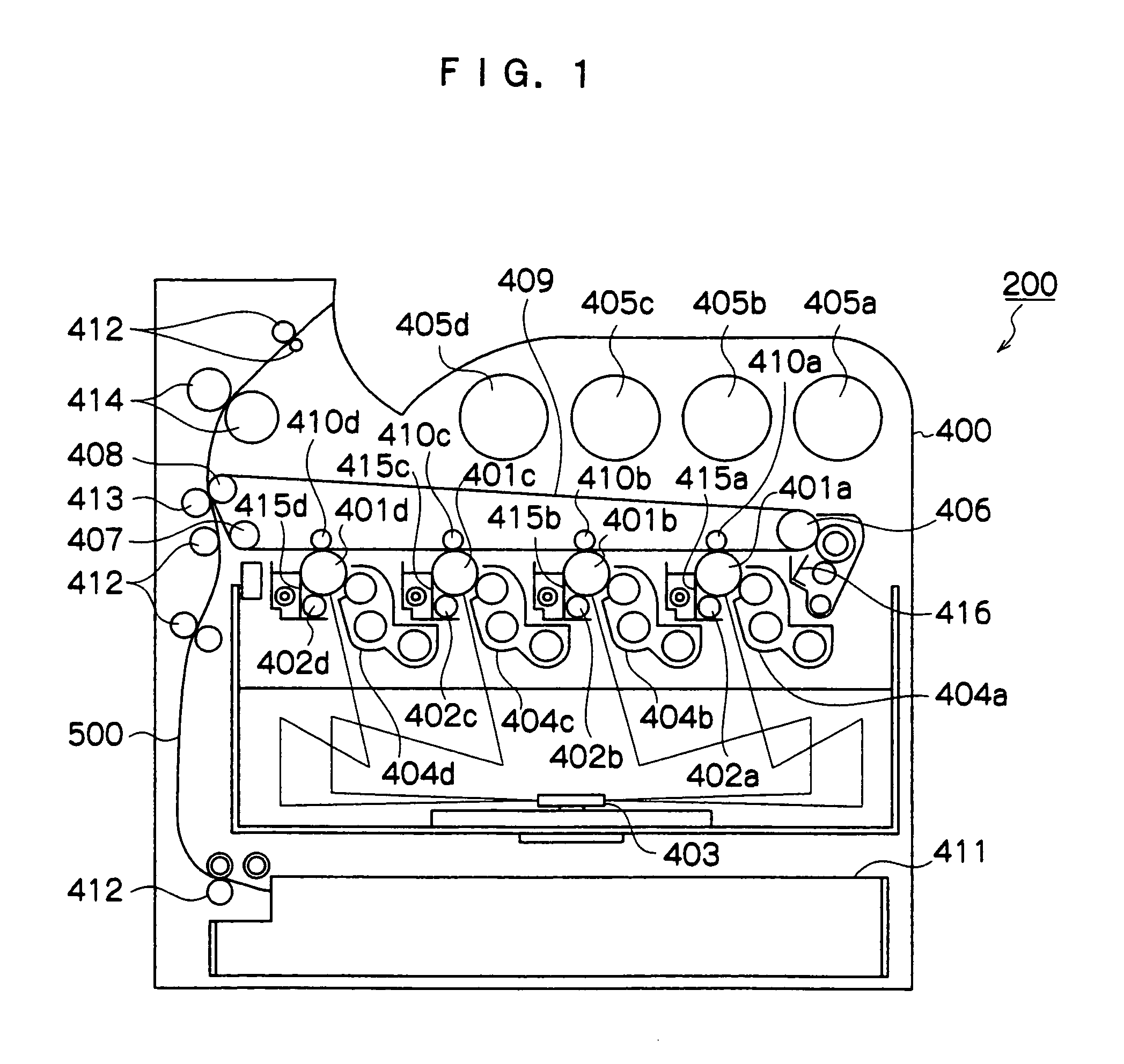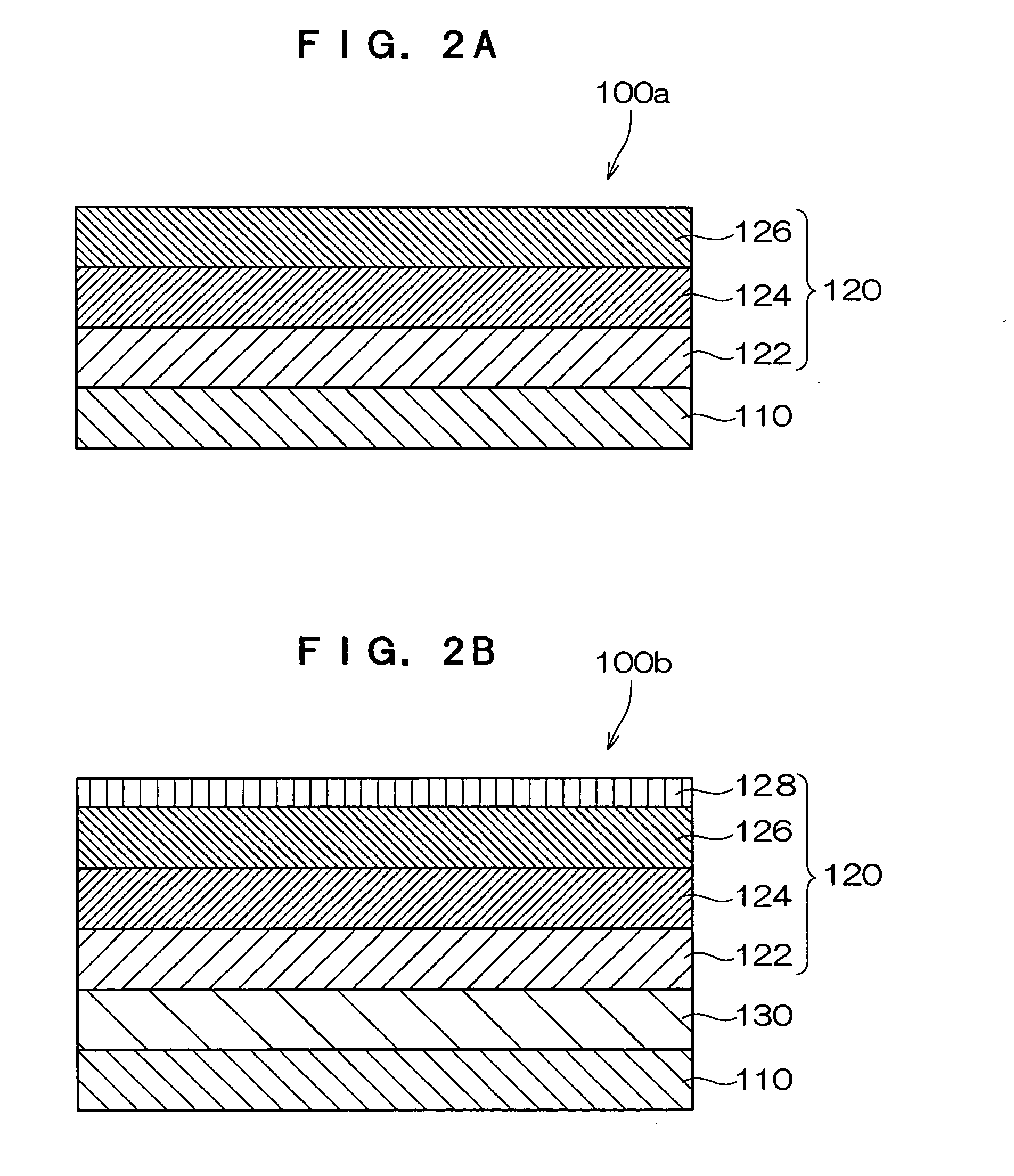Method of forming composite color image
- Summary
- Abstract
- Description
- Claims
- Application Information
AI Technical Summary
Benefits of technology
Problems solved by technology
Method used
Image
Examples
example 1
[0304]Preparation of Ferrite Particle C1
[0305]Seventy-three parts of Fe2O3, 23 parts of MnO2, and 4 parts of Mg(OH)2 are mixed. The resultant mixture is further mixed and pulverized with a wet-type ball mill for 25 hours, and the resultant particles are dried with a spray drier. Thereafter, the resultant particles are subjected to a first preliminary sintering process that is conducted with a rotary kiln at 800° C. for seven hours. As a result, a preliminarily sintered matter 1 is obtained.
[0306]The preliminarily sintered matter 1 is pulverized with a wet-type ball mill for seven hours to obtain particles having an average diameter of 1.8 μm. The resultant particles are dried with a spray drier, and then subjected to a second preliminary sintering process that is performed by a rotary kiln at 900° C. for six hours. As a result, a preliminarily sintered matter 2 is obtained.
[0307]The obtained preliminarily sintered material 2 is pulverized with a wet-type ball mill for five hours to ...
examples 2 to 5
[0326]Ferrite particles C2 to C5 are manufactured in the same manner as the ferrite particles C1 used in Example 1, except that the conditions of the first preliminary sintering process, the second preliminary sintering process, and the main sintering process are changed to those shown in Table 1 so as to change at least one of surface roughness Sm and surface roughness Ra.
[0327]Developers of Examples 2 to 5 are manufactured and evaluation using each of these developers is conducted in the same manner as in Example 1, except that the ferrite particles C1 are replaced with the respective ferrite particles C2 to C5.
examples 6 and 7
[0328]Carrier particles for Examples 6 and 7 are manufactured in the same manner as the ferrite particles C1 used in Example 1, except that the amount of St-MMA is changed to 3.1 parts (Example 6) or 9.6 parts (Example 7) in forming the solution 1 for forming a coating layer that is used to manufacture the carrier particles. The carrier particles for Example 6 have a degree of circularity of 0.989 and a coating content of the coating resin of 3.2% by mass with respect to the mass of the ferrite particles C1. The carrier particles for Example 7 have a degree of circularity of 0.989 and a coating content of the coating resin of 9.7% by mass with respect to the mass of the ferrite particles C1.
[0329]Developers of Examples 6 and 7 are manufactured and evaluation using each of these developers is conducted in the same manner as in Example 1, except that the ferrite particles C1 are replaced with the ferrite particles for Example 6 and those for Example 7, respectively.
PUM
 Login to View More
Login to View More Abstract
Description
Claims
Application Information
 Login to View More
Login to View More - R&D
- Intellectual Property
- Life Sciences
- Materials
- Tech Scout
- Unparalleled Data Quality
- Higher Quality Content
- 60% Fewer Hallucinations
Browse by: Latest US Patents, China's latest patents, Technical Efficacy Thesaurus, Application Domain, Technology Topic, Popular Technical Reports.
© 2025 PatSnap. All rights reserved.Legal|Privacy policy|Modern Slavery Act Transparency Statement|Sitemap|About US| Contact US: help@patsnap.com



